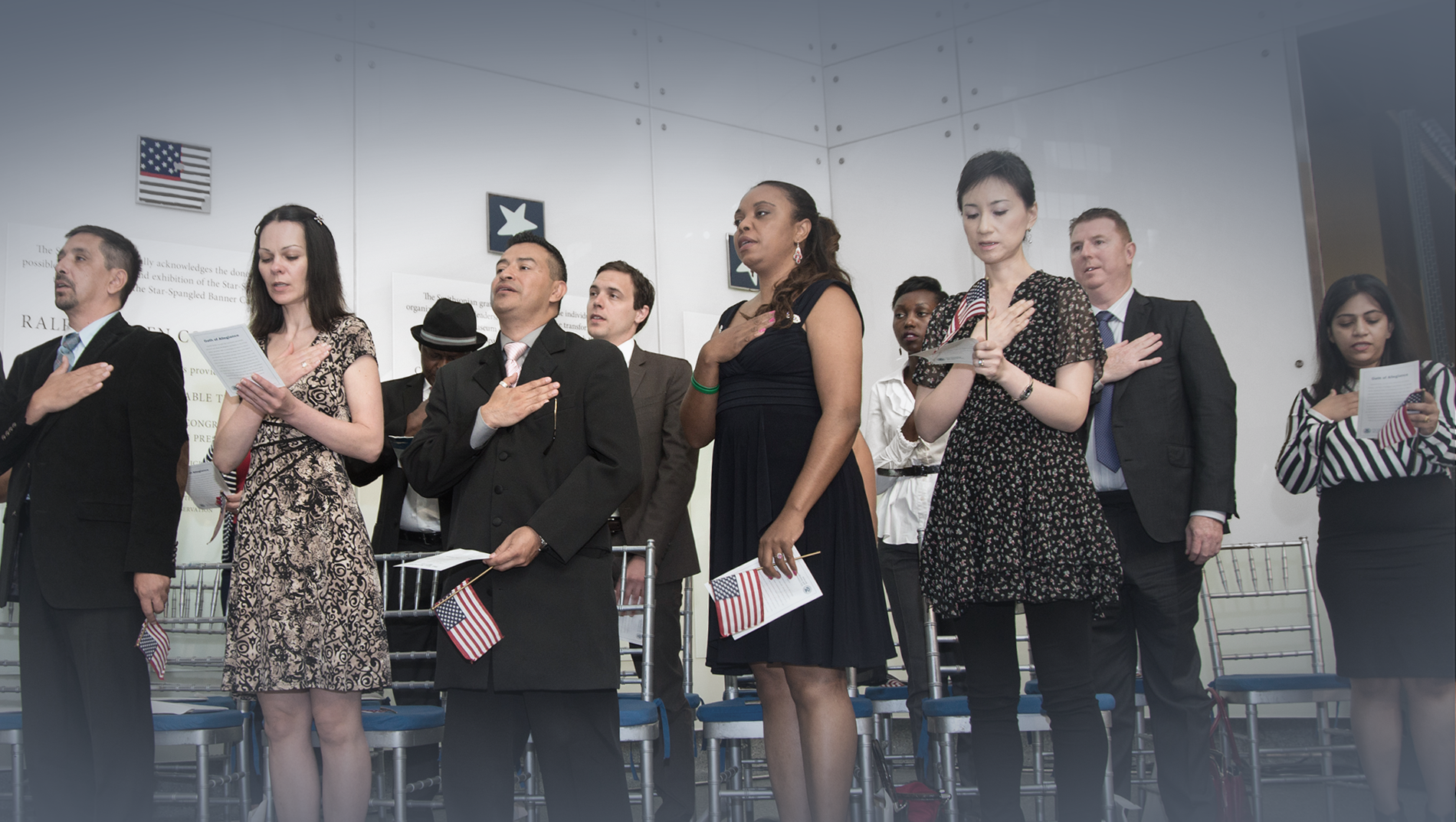Immigration 101
The U.S. immigration system is complex and can be difficult to understand. These resources provide key data points, historical information, and background on hot topics in immigration. Learn the basics about immigration. Immigration in the United States is complex and ever-evolving. Start here to understand the fundamental aspects of immigration policy, its history, and its impact on both individuals and the country at large. Learn commonly used terms about immigration law and how the U.S. immigration system is designed. Explore layered topics like how and whether immigrants can become citizens, as well as what individual protections look like under the law.
How the United States Immigration System Works
- How the Immigration System Works
- June 24, 2024
U.S. immigration law is very complex, and there is much confusion as to how it works. This fact sheet provides basic information…
Read More
Birthright Citizenship in the United States
- Birthright Citizenship
- October 16, 2024
This fact sheet explains birthright citizenship, the Fourteenth Amendment, and its interpretations. Who is…
Read More
Asylum in the United States
- Asylum
- August 27, 2014
Asylum seekers must navigate a difficult and complex process that can involve multiple government…
Read More
Thinking Ahead About Our Immigrant Future: New Trends and Mutual Benefits in Our Aging Society
By Dowell Myers, Ph.D. There are two stories now being told about immigration and the future of America. Each has some basis in fact, although one is based on newer trends and is more optimistic than the other. These stories differ in their answers to three crucial questions: whether immigration to the United States is accelerating out of control or is slowing; how much immigrants are assimilating into American society and progressing economically over time; and how important immigrants are to the U.S. economy. The pessimistic story—in which immigration is portrayed as increasing dramatically and producing a growing population of unassimilated foreigners—draws upon older evidence. But more recent data and analysis suggest a far more positive vision of our immigrant future. Immigration has not only begun to level off, but immigrants are climbing the socio-economic ladder, and will become increasingly important to the U.S. economy as workers, taxpayers, and homebuyers supporting the aging Baby Boom generation. Read More

The Myth of Immigrant Criminality and the Paradox of Assimilation
Because many immigrants to the United States, especially Mexicans and Central Americans, are young men who arrive with very low levels of formal education, popular stereotypes tend to associate them with higher rates of crime and incarceration. The fact that… Read More

Undocumented Immigration by Congressional Districts
In this IPC Policy Brief, author Rob Paral uses new census data to update his earlier IPC report (Playing Politics on Immigration: Congress Favors Image over Substance in Passing H.R. 4437) on the number of undocumented immigrants in U.S. congressional districts. Read More

The Growth and Reach of Immigration: New Census Bureau Data Underscore Importance of Immigrants
New data from the 2005 American Community Survey (ACS), released by the Census Bureau on August 15, 2006, underscore the extent to which immigration continues to fuel the expansion of the U.S. labor force. Read More

Unequal Access: Immigrants and U.S. Health Care
By Sarita A. Mohanty, M.D., M.P.H.Despite the important role that immigrants play in the U.S. economy, they disproportionately lack health insurance and receive fewer health services than native-born Americans. Some policymakers have called for limits on immigrants’ access to health insurance, particularly Medicaid, which are even more stringent than those already in place. However, policies that restrict immigrants’ access to some health care services lead to the inefficient and costly use of other services (such as emergency room care) and negatively impact public health. The future economic success of the United States depends on a healthy workforce. Therefore, policies must be devised that improve, rather than restrict, immigrants’ access to quality health care. Read More

Learning from IRCA: Lessons for Comprehensive Immigration Reform
If the current political stalemate over immigration reform is any indication, many U.S. policymakers have yet to heed the lessons of recent history when it comes to formulating a realistic strategy to control undocumented immigration. In 1986, lawmakers passed the Immigration Reform and Control Act (IRCA) in an attempt to reign in undocumented immigration through heightened worksite and border enforcement, combined with legalization of most undocumented immigrants already in the country. Read More

More Than a Temporary Fix: The Role of Permanent Immigration in Comprehensive Reform
The immigration debate once again is dominated by narrow thinking and the search for simplistic solutions to complex problems. Most lawmakers and the press have come to equate “immigration reform” with the question of whether or not enhanced immigration enforcement should be coupled with a new guest worker program that is more responsive than current immigration policies to the labor needs of the U.S. economy. All but lost in this debate have been the calls by prominent immigration reform advocates to improve and expand pathways for permanent immigration as well. Read More

A Lifeline to Renewal: The Demographic Impact of Immigration at State and Local Levels
Immigrant numbers should be taken in the context of native population growth or decline to better understand the impact of immigration. Read More

From Refugees to Americans: Thirty Years of Vietnamese Immigration to the United States
Thirty years after the fall of the Saigon government, Vietnamese Americans celebrate the fact that they have moved far beyond their refugee origins and become successful economic and political players in U.S. society. Read More

Ties that Bind: Immigration Reform Should be Tailored to Families, Not Just Individuals
Given the extent to which undocumented immigrants already living in the United States are part of U.S.-based families, comprehensive immigration reform must include more than just a new temporary worker program. Read More
Make a contribution
Make a direct impact on the lives of immigrants.

